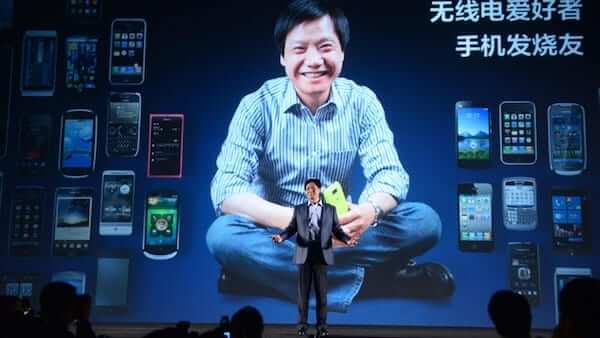China has long been the factory floor that churns out popular gadgets for companies world-wide, but the country’s own technology products were rarely viewed as leading edge.
Now, that is beginning to change.
Increasingly, China’s own technology companies are challenging market leaders and setting trends in telecommunications, mobile devices and online services.
Keeping better-known global competitors at bay in their massive home market, they are hiring Silicon Valley executives and expanding overseas with aggressive marketing campaigns featuring international sports stars and celebrities.
PCs and mobile devicesFOREIGN COUNTERPARTS:
PCs: Hewlett-Packard, Dell; Smartphones: Apple, Samsung
ANNUAL REVENUE, 2012:
$33.9 billion
KEY POINTS:
• Became world’s biggest PC maker in 2013
• Bought IBM’s PC business in 2005 for $1.25 billion
• Generates more than half of its revenue overseas
Chinese companies still face a perception problem among consumers in many parts of the world that their products aren’t as high-quality or reliable as others. Some foreign competitors have alleged that Beijing gives unfair advantages through subsidies, cheap financing and control over the currency market.
But, many executives at Chinese and Western companies contend, China’s technology sector is reaching a critical mass of expertise, talent and financial firepower that could realign the power structure of the global technology industry in the years ahead.
“Traditionally Chinese companies were fast followers, but we are starting to see true innovation,” said Colin Light, partner at PricewaterhouseCoopers.
The rise of China’s tech industry is fueled in part by its growing investment in research and development. According to a study released in December by U.S.-based Battelle Memorial Institute, R&D spending in China will likely reach $284 billion this year, up 22% from 2012. That compares with just 4% growth forecast in the U.S. to $465 billion for the same period. It forecasts China will surpass Europe in terms of R&D spending by 2018 and exceed the U.S. by 2022.
At Shenzhen-based Huawei Technologies Co., the world’s second-largest telecommunications-equipment supplier by revenue after Sweden’s Ericsson, annual R&D expenditures rose fourteenfold in a decade to $5.46 billion in 2013 from $389 million in 2003.
When Peter Zhou joined Huawei straight out of graduate school in 2000, the company’s Shanghai research center had a few hundred workers in a shared office. Every Wednesday night after work, Mr. Zhou and other young Chinese engineers gathered for study sessions, sometimes using university textbooks from the U.S.
“At that time, Huawei was not at the same level as Western companies,” Mr. Zhou, now an executive at Huawei’s wireless-equipment business, recalls.
“We were like students.”
But in the past decade, Huawei overtook Western rivals such as Nokia Corp. NOK1V.HE -0.51% and Alcatel-Lucent SA ALU.FR -1.10% in the telecom-gear market. Part of its success stemmed from Huawei engineers’ creative ways to upgrade wireless networks using software instead of a costly method of replacing all hardware components, according to Mr. Zhou.
Huawei now has an R&D center in Shanghai that employs more than 10,000 engineers, many of whom have computer-science degrees. As the mobile industry deploys faster fourth-generation networks, Huawei is already working on the technology for fifth-generation networks, which could be ready around 2020.
Huawei’s global expansion has met some skepticism. Last year, some European Union officials alleged that unfair subsidies from the Chinese government allowed Huawei to sell its gear at lower prices in Europe. Huawei denied those allegations.
In October, when Danish telecom carrier TDC TDC.KO -0.68% A/S announced a $700-million deal to replace its existing Ericsson equipment with Huawei’s gear, TDC Chief Executive Carsten Dilling said that he chose Huawei for its technical expertise, not its prices—adding that Huawei was “actually quite expensive.”
Glory Global Solutions Ltd., a U.K.-based global supplier of cash-handling machines used at banks, opened a research center in Shanghai in 2011. The center’s Chinese engineers are developing advanced sensor technology to identify various security features embedded in bank notes to detect counterfeit bills, combing software programming, hardware engineering and scientific methods like spectrometry.
Working on cutting-edge technology with Chinese engineers involves a risk of them leaving to set up local competitors, said its Chief Executive Paul Adams. Still, local engineers are bringing new ideas to Glory Global, he said.
China is also moving up the technological curve in sophisticated areas like mobile processor chips, where it used to be absent. U.S. competitors like Qualcomm Inc. QCOM +0.28% and Nvidia Corp. NVDA +0.31% are still far ahead, but China’s Fuzhou Rockchip Electronics Co. and Allwinner Technology Co. are increasing their presence in the fast-growing market for chips used in low-end smartphones and tablets. Last month, the Chinese government announced plans to spend almost $5 billion to create a fund to make investments in the country’s microchip industry.
In consumer products, few Chinese brands have succeeded in becoming household names globally. But personal-computer maker Lenovo Group Ltd. 0992.HK -2.68% , which last year overtook Hewlett-Packard Co. HPQ +2.50% as the world’s largest PC maker by units sold, is setting a new precedent with its aggressive global expansion in smartphones. In the third quarter of last year, Lenovo ranked third in smartphone sales globally after Samsung Electronics Co. 005930.SE -0.15% and Apple Inc., AAPL -0.56% according to research firm Gartner.

Huawei spent $5.46 billion on research in 2013, up from $389 million in 2003. Above, a Huawei phone at CES. Associated Press
Lenovo, which bought International Business Machines Corp.’s IBM +0.54% PC business in 2005, released its first smartphone in China in 2010. At that time, its executives knew that the company lacked many of the resources necessary to compete globally in smartphones. Lenovo recruited many people from telecom and Internet industries to inject “new blood,” according to Chief Strategy Officer Zhou Qingtong.Around 2010, Lenovo also created a team of mobile-app developers. In mid-2013, it launched Qiezi, an app for both Apple’s iOS and Google Inc. GOOG +0.66% ‘s Android operating systems that enables two phones to instantly share photos and videos without an Internet connection. In four months after its debut, Qiezi gained more than 30 million users, according to Lenovo.
“We needed a game changer,” said J.D. Howard, a former Silicon Valley entrepreneur who joined Lenovo in early 2012 to head its overseas mobile device operations.
In 2012, Lenovo signed a three-year sponsorship deal with the U.S. National Football League that allowed it to use NFL trademarks in its marketing. Lenovo also hired National Basketball Association star Kobe Bryant for its smartphone ads in Asia and enlisted Hollywood actor Ashton Kutcher in its latest marketing ploy in the U.S.
Since 2012, Lenovo has launched smartphones in overseas markets such as Indonesia, India and Russia. In Indonesia, it now takes up more than 10% of the local smartphone market.
“Apple is of course a cool brand, but I think Lenovo is cool too,” said Amalia Pulungan, a nonprofit worker in Jakarta who bought a Lenovo smartphone in October.
In late December, Lenovo opened its new hub for research, development and production of smartphones and tablets in the central Chinese city of Wuhan, after it spent $800 million to build the 200,000 square-meter facility.
“We definitely want to be number one in smartphones, but it will be a long journey,” said Lenovo Chief Executive Yang Yuanqing during an interview.
While Chinese companies have made big gains in hardware, many of them face a challenge that has plagued other Asian technology companies: developing software and user interfaces that appeal to a global audience.
Tencent Holdings Ltd. TCEHY +0.20% , which owns the WeChat smartphone application, is bucking that trend. Launched in late 2010, WeChat dominates China’s mobile messaging market and the majority of the app’s 272 million monthly active users are in China. But last year, it spent $200 million on overseas ad campaigns to push WeChat into many markets including India, South Africa, Spain and Italy. Tencent says the app has more than 100 million downloads abroad.
WeChat was ahead of competitors in offering an easy-to-use feature for sending recorded voice messages and it is challenging the dominance of Silicon Valley’s WhatsApp, which has more than 300 million monthly active users globally.
Mikey Mashila, an 18-year-old fashion designer in Johannesburg, downloaded WeChat last summer, after seeing the app’s TV ad featuring Argentine soccer star Lionel Messi.
“Everyone knows Messi in South Africa,” said Mr. Mashila, who invited his friends to join WeChat and now uses the app as often as WhatsApp.
“In handsets or laptops, Chinese tech companies’ global expansion has been much more of a hardware story so far, and I think what’s fascinating about Tencent is that it’s becoming a software and services story,” said Michael Reynal, a portfolio manager at San Francisco-based RS Investments, which has about $27 billion in total assets under management.
Tencent’s share price nearly doubled last year and its market capitalization of $123 billion isn’t far from Facebook Inc. FB -0.71% ‘s $139 billion market value.
Tencent isn’t alone. A basket of Chinese tech stocks rose 42% over the past six months, according to Reorient Financial Markets. Over the same period, the S&P North American Technology Sector Index rose 18%.
Behind the overseas expansion of Lenovo, Huawei and Tencent, the domestic startup scene is also becoming more vibrant. In China, where smartphones are sole Internet tools for many consumers, the behavior of local mobile users has at times presaged trends in the U.S.
Several years ago, Chinese entrepreneur Tang Yan researched his idea of a location-based mobile dating app that would connect strangers in close geographic proximity, and was surprised to find few examples of such services among major U.S. apps. “I thought if the idea is right, then it would get hot in America first,” said Mr. Tang, who is now chief executive of Beijing Momo Technology.
Mr. Tang launched Momo, a dating app, in China in 2011 and now has more than 35 million monthly active users. The most similar app in the U.S., Tinder, launched in September 2012.
“More Chinese players are beginning to realize that to survive in the long run and have sustainable growth, they really have to innovate,” said Bernard Kwok, a Beijing-based senior vice president of U.S. software maker Symantec Corp. SYMC +0.70%.
written by experts at ClamorWorld, where you can express openly. see more






























